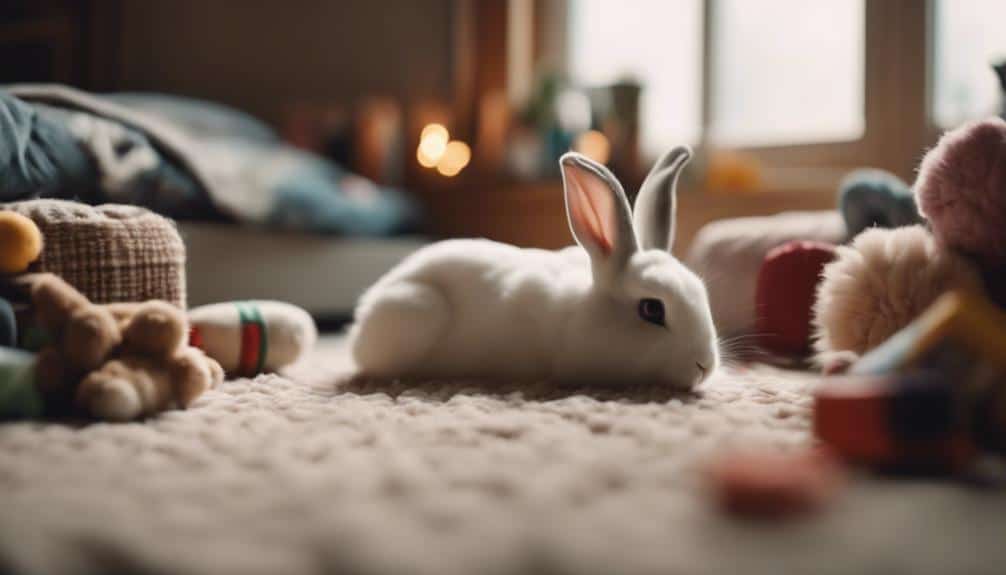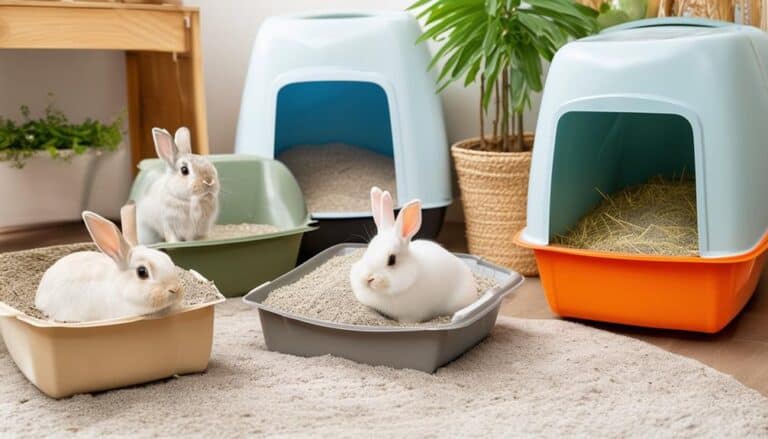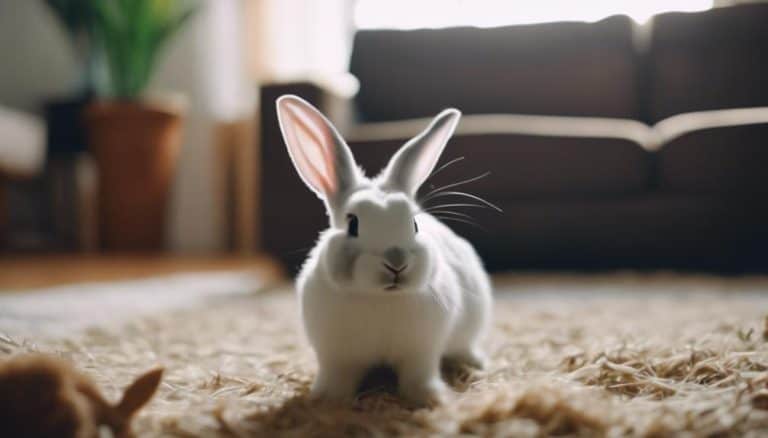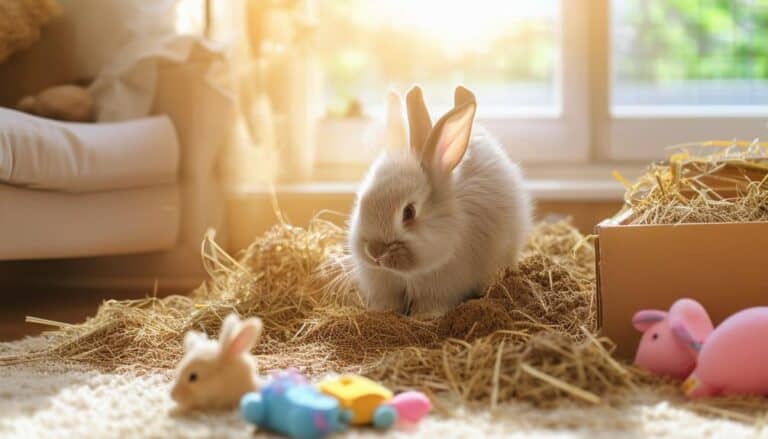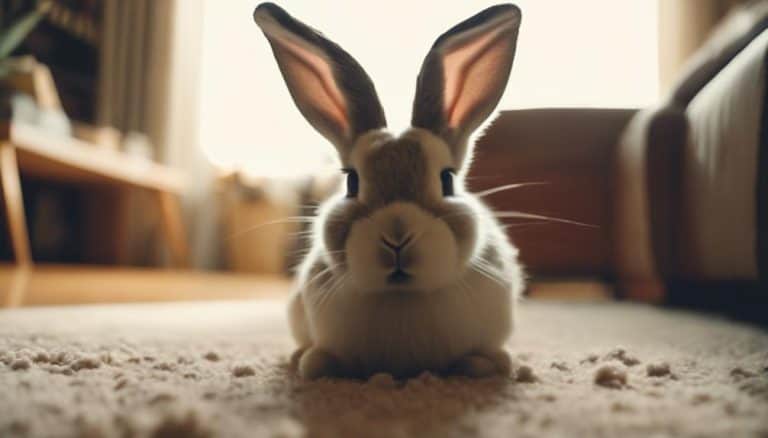7 Tips to Make Your Pet Rabbit Affectionate
Getting your pet rabbit to be affectionate isn’t just about giving them treats or petting them when you feel like it. You need to understand their unique personality and be willing to put in the time to build trust.
For instance, spending quality time with your rabbit daily and respecting their boundaries are just a couple of ways to start. But how can you guarantee that you’re truly connecting with your rabbit? And what specific actions can you take to make sure they feel comfortable and loved?
Let’s explore the key strategies that can help you turn your pet rabbit into a more affectionate companion.
Understand Their Personality
Understanding your rabbit’s unique personality is vital for fostering a strong and affectionate bond. Each rabbit exhibits distinct traits and preferences, so it’s important to observe and interpret their behavior accurately. By paying close attention to your rabbit’s body language and reactions, you can gain invaluable insights into their personality.
Some rabbits love being the center of attention and are naturally more outgoing and affectionate. Others might be shy and reserved, necessitating a gentler approach to bonding.
To bond with your rabbit effectively, start by respecting their individual differences. Recognize that forcing interaction can lead to stress and hinder your efforts. Instead, allow your rabbit to approach you on their terms. Notice how they respond to different stimuli, such as petting or new toys, and adapt your interactions accordingly.
Understanding these subtle cues and preferences is a way to show them how much you care. This tailored approach not only strengthens your bond but also ensures your rabbit feels safe and loved.
Building a successful relationship with your rabbit hinges on recognizing and appreciating their unique personality traits, laying the foundation for a deeper, more affectionate connection.
Spend Quality Time Daily
Spend at least 1-2 hours daily interacting with your rabbit to build trust and affection.
Consistent playtime routines, gentle handling techniques, and engaging with interactive toys are essential in fostering a strong bond.
This consistent interaction helps your rabbit feel secure, comfortable, and connected to you.
Consistent Playtime Routine
To foster a deep bond with your rabbit, dedicate at least 3-4 hours each day to interactive activities like petting, grooming, and playing. Establishing a consistent playtime routine is vital for building trust and encouraging affection from your pet rabbit.
Regular interaction creates a secure environment where your rabbit feels loved and safe, making it more likely to reciprocate affection. A structured routine helps your rabbit anticipate and look forward to these interactions, thereby reducing stress and anxiety.
Consistency in playtime not only strengthens your bond but also promotes mental stimulation and physical exercise, essential for your rabbit’s overall well-being. Engaging in activities such as playing with toys, gentle petting, and grooming sessions helps build a sense of security and routine.
Quality time spent daily fosters a trusting relationship, making your rabbit more comfortable and affectionate over time. Evidence suggests that animals thrive in environments where they can predict and rely on their caregiver’s presence and affection.
Gentle Handling Techniques
When interacting with your rabbit, make sure you handle it gently to build trust and promote affection. Evidence suggests that spending 3-4 hours daily with your rabbit can greatly strengthen your bond. Gentle handling is essential to ensuring your rabbit feels secure and valued, which in turn fosters affection.
To achieve this, follow these expert-recommended strategies:
- Avoid Sudden Movements and Loud Noises: Rabbits are sensitive creatures. Quick motions or loud sounds can startle them, hindering the development of trust.
- Use a Calm and Soothing Voice: Speaking softly to your rabbit creates a positive and comforting environment, reducing stress and anxiety.
- Respect Their Body Language: Pay close attention to your rabbit’s cues. Signs of discomfort, such as thumping or retreating, indicate the need to adjust your approach.
In addition, offering treats during handling sessions can help associate your touch with positive experiences, further encouraging affectionate behavior. Be mindful of your rabbit’s boundaries and always prioritize their comfort and safety.
Consistent, gentle interaction not only nurtures trust but also deepens your emotional connection, making your rabbit more affectionate over time.
Interactive Toys Engagement
Engaging your pet rabbit with interactive toys is essential for their mental stimulation and physical well-being. Rabbits are social creatures who thrive on interaction, and neglecting their need for engagement can lead to boredom and subsequent health problems. By letting your rabbit play with interactive toys, you provide a platform for natural behaviors like digging, chewing, and foraging.
Spending quality time daily with your rabbit using toys can strengthen your bond and contribute to their overall happiness. Interactive toys such as puzzle feeders, tunnels, and balls not only entertain but also mentally enrich your rabbit, mitigating stress and promoting a healthy lifestyle. Regularly rotating different types of toys prevents boredom and keeps your rabbit engaged, ensuring they remain active and mentally stimulated.
When selecting toys, prioritize those that encourage physical exercise and cognitive challenges. This approach helps in maintaining your rabbit’s physical health and preventing obesity, a common issue in rabbits.
Respect Their Boundaries

Respecting your rabbit’s boundaries is crucial for fostering a trusting and affectionate relationship. Allow your rabbit to approach you on their terms, as this demonstrates respect for what your rabbit likes and will help establish trust. Forcing physical affection or invading their personal space can lead to stress and reluctance to engage. Instead, let them come to you, as this can be a significant sign of affection and trust.
To make sure you’re respecting their boundaries, consider these steps:
- Observe Body Language: Pay attention to your rabbit’s body language. Signs like flattened ears, tense posture, or thumping indicate discomfort. In contrast, a relaxed body and gentle nudges are positive signs.
- Create a Safe Environment: Provide a quiet and secure space for your rabbit. A calm setting helps them feel more at ease and willing to interact.
- Be Patient: Building trust takes time. Avoid rushing interactions. Gradually, your rabbit will feel more comfortable and affectionate towards you.
Mimic Rabbit Behavior
Mimicking your rabbit’s behavior, such as gentle grooming and head nudges, can greatly enhance trust and affection in your relationship. By mirroring these actions, you create a sense of familiarity and comfort, which is crucial for bonding with your pet. Rabbits have complex personalities, and understanding their natural behaviors is essential to fostering love and affection. When you mimic grooming, for example, you’re speaking their language, making them feel secure and valued.
Engage with your rabbit on their level. If they lie down next to you, mirror this by resting beside them. These small but meaningful actions communicate that you’re part of their world. A rabbit’s mischievous side can be charming, and by participating in their play, you build a stronger connection. Copy their movements subtly—if they nudge you, respond with a gentle nudge back. This reciprocal behavior fosters mutual understanding and trust.
Rabbits respond positively to familiar actions, so mimicry can bridge any gaps in communication. By doing so, you enhance your relationship, demonstrating that you respect and understand their unique personality. This approach is evidence-based and supports a deeper, more affectionate bond with your pet.
Learn Their Body Language
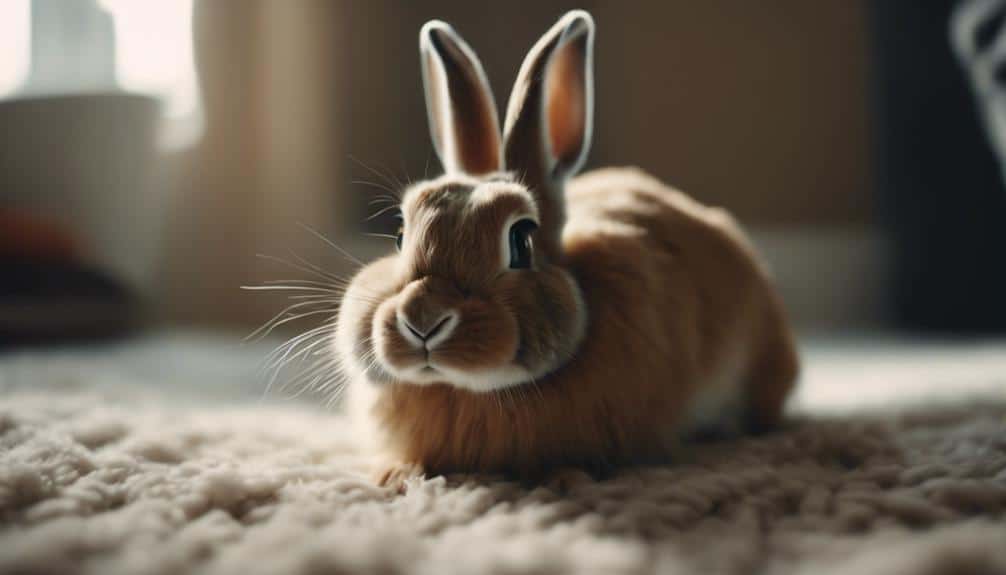
To foster a deeper bond with your rabbit, you need to recognize their happy signals, such as binkying, nuzzling, and flopping. Additionally, understanding signs of discomfort, like thumping or hiding, is essential.
Recognizing Happy Signals
Understanding a rabbit’s body language is essential for recognizing when they’re happy and relaxed. Rabbits show love and affection through various behaviors that can help you gauge their emotional state. By learning these signals, you can cultivate a stronger bond with your pet and safeguard their well-being.
- Binkying: This involves rapid hops and twists in the air, indicating your rabbit is ecstatic and carefree. It’s a clear sign they’re in a joyful state.
- Nuzzling and Grooming: When your rabbit gently nudges you, nuzzles, or engages in grooming behavior, they’re demonstrating affection and bonding. These actions show they trust you and feel secure in your presence.
- Flopping: A rabbit that flops over, collapsing on their side, is displaying complete relaxation and contentment. This behavior signifies they feel safe and comfortable in their environment.
Additionally, friendly licks on your hand or face are further evidence of their relaxation and trust. When a rabbit seeks attention by nudging, head-butting, or rubbing against you, they’re expressing a desire for interaction and affection. Recognizing these happy signals allows you to create a nurturing and loving environment for your rabbit.
Understanding Discomfort Signs
While acknowledging the significance of recognizing happy signals, it’s equally vital to identify signs of discomfort in your rabbit’s body language to ensure their well-being. Much of this understanding comes from observing their behavior every day.
Rabbits communicate discomfort through various signals, such as thumping their hind legs or avoiding eye contact. These behaviors indicate stress or fear and should prompt you to investigate the cause.
Look out for body language cues like flattened ears, a tense body posture, or teeth grinding. These are clear indicators that your rabbit isn’t comfortable. Additionally, aggressive behaviors such as biting or lunging can also be manifestations of discomfort. These signs shouldn’t be overlooked, as they often point to underlying issues that need addressing.
Pay attention to more subtle signs as well. Excessive grooming, hunching, or a sudden avoidance of interaction are all red flags. Any abrupt changes in behavior or vocalizations can indicate that your rabbit is in distress.
Show your rabbit that you care by being vigilant and responsive to these discomfort signs. Understanding and addressing these cues daily will foster a more affectionate and trusting relationship.
Engage in Interactive Play
Regularly engaging in interactive play activities, such as fetch and treat puzzles, greatly enhances the bond between you and your pet rabbit. Meeting your rabbit’s need for mental stimulation and physical activity is vital. These activities not only keep your rabbit entertained but also allow you to show love and affection in a way that resonates with their natural behaviors.
To effectively engage in interactive play, consider the following:
- Fetch: Use lightweight toys that your rabbit can easily pick up and carry. Let your rabbit chase and retrieve the toy, providing both physical exercise and mental engagement.
- Treat Puzzles: Stimulate your rabbit’s problem-solving skills by hiding healthy treats inside puzzle toys. This encourages exploration and keeps your rabbit mentally sharp.
- Obstacle Courses: Set up a small obstacle course using tunnels, ramps, and boxes. This will let your rabbit navigate and explore, promoting physical activity and agility.
Rotating toys regularly prevents boredom and maintains your rabbit’s interest, which is essential for their overall well-being.
Playtime is a key opportunity to interact meaningfully and strengthen your bond. By incorporating these interactive activities, you’ll create a more affectionate and connected relationship with your pet rabbit.
Be Patient and Respectful
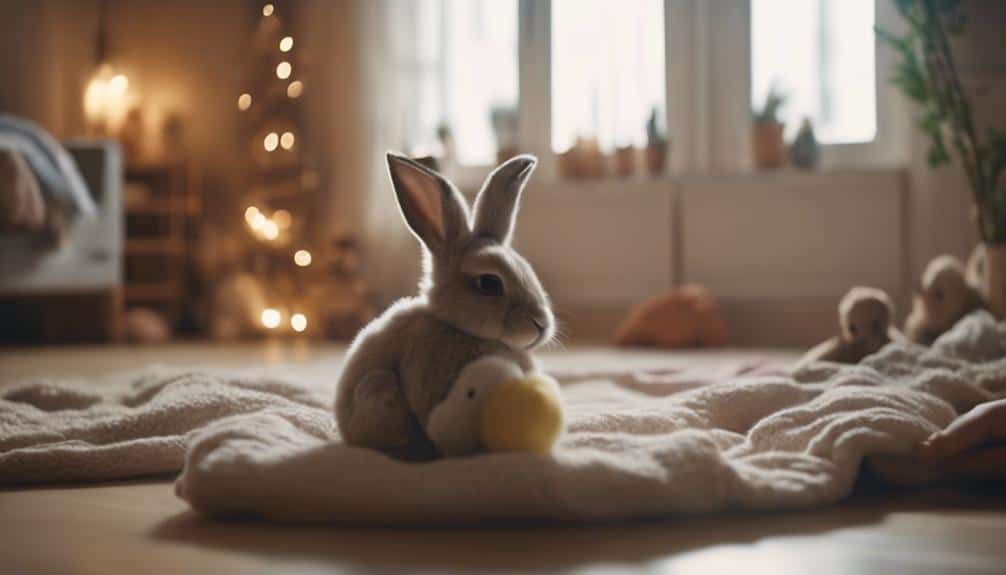
Building a strong and affectionate relationship with your pet rabbit requires patience and a respectful approach to their unique needs and behaviors. Rabbits need time to build trust, so rushing the process can lead to fear and stress.
Make sure to respect their boundaries and preferences, allowing them to approach you for cuddles and interactions on their terms. Forcing physical contact or handling can cause your rabbit to become wary or defensive, inhibiting the development of a positive relationship.
Understanding and appreciating your rabbit’s unique personality is essential. Each rabbit has its own set of behaviors and comfort levels, so taking the time to observe and respond accordingly will strengthen your bond.
Show respect by listening to your rabbit’s cues; for instance, if they retreat or display signs of discomfort, give your rabbit space to feel safe. This creates a comfortable environment where they can express affection naturally.
Conclusion
By understanding your rabbit’s personality, spending quality time daily, respecting their boundaries, mimicking rabbit behavior, and learning their body language, you’ll foster a deeper bond.
Engaging in interactive play and remaining patient and respectful are key to nurturing trust and affection.
Implementing these evidence-based strategies will help you build a loving, affectionate relationship with your pet rabbit, ensuring their well-being and happiness.
Consistency and attention to their needs will ultimately create a rewarding companionship.

